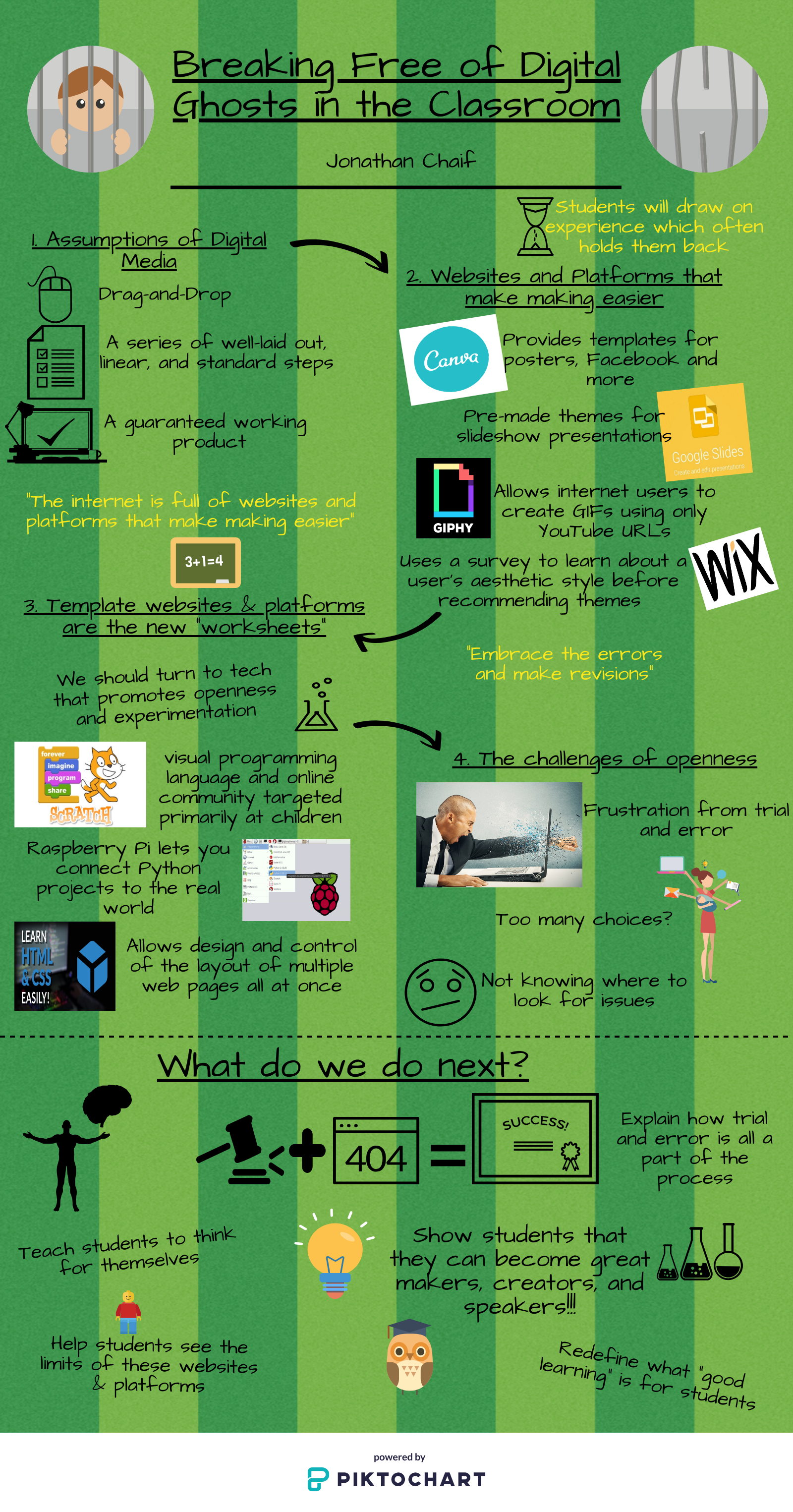The article I chose to look at was “Digital Ghosts in the Modern Classroom” by Hinck, A (2018). http://hybridpedagogy.org/digital-ghosts-modern-classroom/
The Ashley Hinck begins writing about how students are interested in taking digital media classes because the want to learn to create media through, photoshop, HTML/CSS, and even personalized GIFs. However, what they are really looking for is to learn how to use drag-and-drop platforms to make what they’re looking for. These shortcut/template platforms have huge effects on students because similar to everything else in the classroom, there are blank spaces that the student copies information and pastes to. To me, this was often the case when using technology in the classroom. My teachers always gave us projects where we would just learn about how to create posters, presentations and such from programs what required us to just find information and paste it into the spaces. As a music teacher, I expect my students to use expression, and creativity when performing because music is about personal and group discovery and learning to bring out the beauty within. How can I as a teacher expect these things when I can’t do the same when using digital media.
As well, the article states that these shortcut/template websites and platforms are becoming the new “worksheets” and that we should be trying to get away from this and turn to technologies that promote openness and experimentation. The issue with these approaches is that students will draw from their previous experiences which happens to be the programs that are holding them back. We need to find a way to get students away from these programs from the get go so that these habits are never instilled in them.
On the other hand, when we look to these programs like HTML/CSS, Raspberry Pi, and Scratch, what we don’t realize is that these platforms don’t guarantee a finished product in the end. There is so much openness and exploration that students become very frustrated from working for long periods of time only to be met with error after error. Students are not comfortable with making mistakes and having to diagnose the problem by themselves but through trial and error and a little bit of patience, the struggles do eventually pay off. Digital media is a struggle and is full of the unknown, but allows more control over the final product.
Moving forward, we must learn from our mistakes and take the time to learn about these programs so that we can effectively teach our students. As well, we must lead the way and help guide/show them that mistakes are okay and that they must learn to try and try again until it works. If we can get to this point, out students will see that they can become great makers, creators, and speakers in the digital world.
Lastly, when I started this assignment, I decided I would look at a bunch of the recommended platforms to see which one I thought I could get fairly comfortable with before starting any of the reading/listening. When doing so, I found that Piktochart was really interesting and stuck out, especially because all I needed to do was to find a template and copy and paste my information into it… However, once I read the article, I had a moment where I laughed out loud because of how ironic it was. From here, I decided I would go and start with a completely blank page and see what I could come up with. This was an interesting time because I actually had about three other info graphics that I started only to change my idea and start a new one. I ended up with this one because I thought it worked well for what I was aiming for. There is a lot I would change but I am happy with where I ended up at with all the trial and error and I know now to try to get away from all of the copy and pasting.
– Jon Chaif
https://create.piktochart.com/output/32980414-new-piktochart

